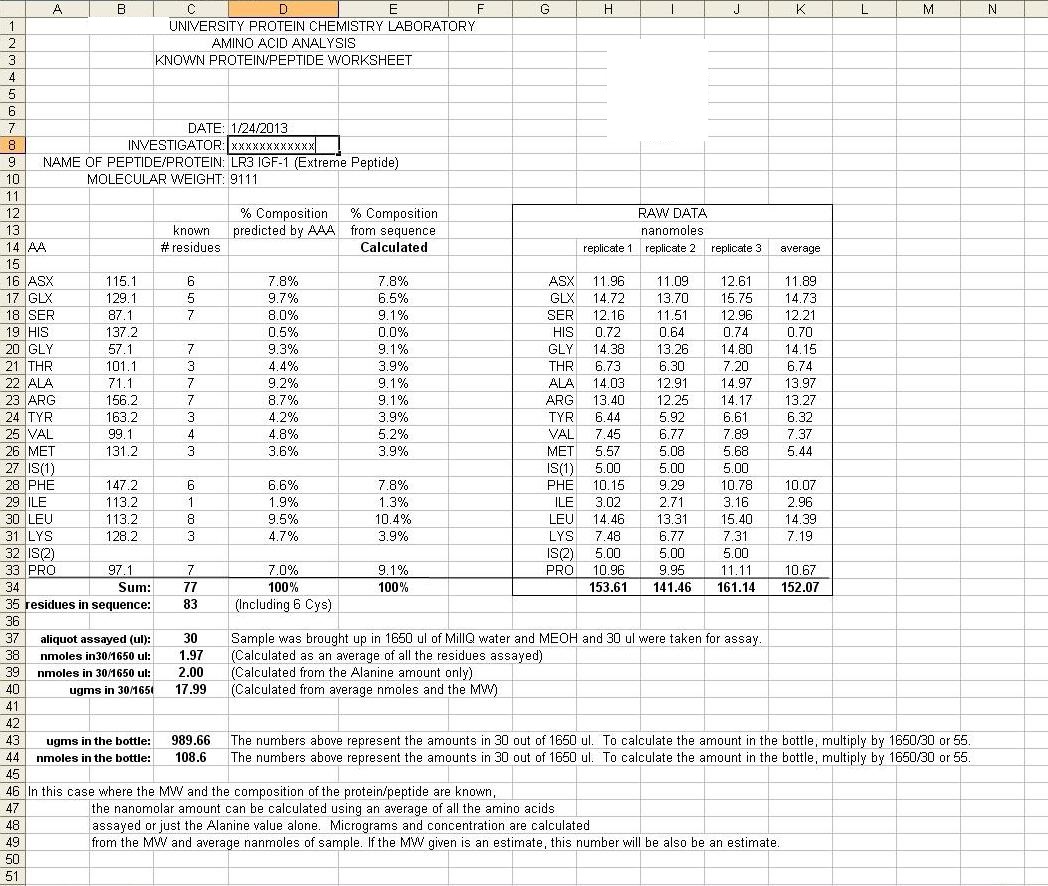A Guide to Amino Acids
It can be said that amino acids are a special group of molecules that have a basic form. No matter whether the amino acid is found in the cell of a bacteria, human being, or a plant, it will have the same structure and may even carry out the same functions within the cell. Even though there are well over 500 amino acids, most organisms make use of 22 standard amino acids, and a handful of others that may be useful based on certain conditions.
For example, specialized amino acids may be produced to function based on PH levels within a cell, variable temperatures, or the presence of oxygen. Unfortunately, more research needs to be done in order to determine how many non-standard amino acids are used, as well as their role in any given organism under any given environmental condition.
Standard Amino Acid Shape
Amino acids are usually composed of a handful of atoms, (Carbon, Hydrogen, Nitrogen, and Oxygen) that are arranged into specific structures. This includes a side chain, a COOH (carboxylic acid) unit, and an NH2 (amine) unit. Visually, it is easiest to imagine the COOH unit at one end of the amino acid, a chain or ring of carbons down the center, and NH2 at the other end.
The side chain is usually attached to the backbone. Depending on the amino acid in question, this side chain may form a chain of atoms, or form a carbon ring with other atoms attached to it.
Basic Ways Organisms Use Peptides
Regardless of whether you are studying a cell with a single strand of RNA for its genetic material or hundreds of strands of DNA, you can rest assured that coding information exists for hundreds, if not millions of peptides. Therefore, it should come as no surprise that peptides represent some of the most important molecules found within any given cell.
In single cell organisms they can be used to signal the start and stop of cellular division, open RNA or DNA for replication or transcription, and determine which molecules are made at any given moment. Peptides may also be used to facilitate the conversion of glucose and other forms of fuel into energy.
When it comes to multi-cellular organisms, peptides become even more important. For example, the vast majority of plants and animals would not be able to survive without insulin. This particular peptide bonds to glucose in the blood or sap of an animal or plant, and then encourages transport across cellular membranes.
Without this particular peptide, it would be impossible for cells to take in glucose. In a similar way, peptides can act as hormones, neurotransmitters, and signaling molecules. You may even find that peptides play roles in immune responses, and just about any other process that requires a signaling cascade within cells or specific tissues.
Click here for the next article
For the rest of the series and the resources used click here
*Our products are for scientific research purposes only. (Click here to read our disclaimer)
Click here to view the homepage of our store.
Click here to view our entire PDF research library
Click here to view or download this article in PDF format

